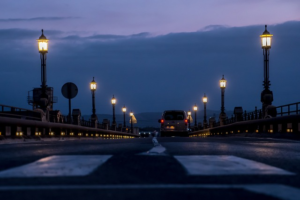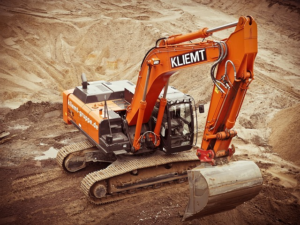
OTTAWA — Police officers on Saturday cleared out the central area of a sprawling demonstration in Ottawa, moving from truck to truck and arresting protesters as they continued to subdue the occupation that has disrupted the Canadian capital for weeks.
Starting about 10 a.m., police advanced on trucks that had been parked on Wellington Street, the thoroughfare in front of the Parliament building, drawing guns on some vehicles and banging on doors as they searched for any people inside. They arrested several as other demonstrators shouted “Shame on you!” from nearby. In the heart of the main encampment on Saturday, the police pushed people back with batons and irritant spray and made more arrests.
One demonstrator, David Paisley, a HVAC technician who has spent the protest broadcasting updates from a fishing shack on the back of a flatbed truck known as “the shed,” described the moment an officer entered the vehicle to arrest him.
“He had a big military rifle, he pointed right at my chest, he yelled at me to get down, on the ground,” said Mr. Paisley, 33, who captured the moment of his arrest on a recorded livestream. “It was like a movie scene.”
A recording played in French and English, as the police advanced. “You must leave,” it said. “Anyone found in the zone will be arrested.”
The police operation appeared to be a final salvo in the government’s belated effort to break up the occupation. In recent weeks, the demonstrations, which began with truckers rallying against vaccine mandates, have attracted a variety of protesters airing grievances about pandemic restrictions, claims of government overreach and Prime Minister Justin Trudeau’s stewardship of the country.
By midmorning, police had cleared the demonstrators from what had been the occupation’s core, Wellington Street, and set up barricades. The Ottawa Police said that as of Saturday evening, 170 people had been arrested and that 46 vehicles had been removed. The police declined to discuss their tactics but in a tweet on Saturday, they asked the public to stop calling emergency phone lines “to express displeasure about the police action” to end the protest, noting that making unnecessary calls to 911 was a crime.
While significantly throttled, the protest was not completely disbanded. As police pushed demonstrators away from Parliament, some congregated on side streets while police warned that there were children in the crowd. “We are seeing young children being brought to the front of the police operation,” the Ottawa police said on Twitter. “This is dangerous and it is putting the children at risk.”
The protests had blocked traffic on major streets downtown, disrupted business and tormented residents with incessant honking. But they were by and large nonviolent. Organizers inflated bouncy castles in the street, and people brought small children and dogs. D.J.s played music from a flatbed truck turned into a stage. At one point people soaked in a hot tub erected in front of the Parliament building.
Demonstrators condemned the show of force against their occupation. “It’s horrific,” said Dagny Pawlak, a spokeswoman for the truckers, said in a text message on Saturday. “A dark moment in Canadian history.”
While the protesters grew more entrenched, criticism of the government’s failure to remove the occupation built across the country — and especially among many Ottawa residents.
Kathryn Moore, an administrator at the University of Ottawa, said she lived close enough to the downtown core to hear the horns of the truckers when the wind blew in her direction. “I lost my patience after Week 2,” she said.
Copycat protests, including the blockade of a vital international trade route between Windsor, Ontario, and Detroit, cost millions in lost revenue. And others, as far away as France and New Zealand, turned the world’s attention to the disruption in Ottawa, caused by a small, but vocal minority, in a country with one of the highest rates of vaccination in the world.
Efforts to rout the demonstrators began on Friday in a standoff where the police and protesters stood at loggerheads for more than five hours, a stalemate punctuated by the sudden appearance of a horse-mounted unit towering over the crowd. After warning that the shoving protesters were assaulting police, law enforcement then deployed the mounted officers, who charged parallel across the fault line between the two groups, trying to separate them. In the process, the animals knocked over some protesters and stepped on at least one person. The police said that they were “unaware” if anyone was injured in the fracas.
Throughout the course of the protest, public opinion has shown that pandemic fatigue is high here, in a country that has frequently rolled out stringent coronavirus restrictions. In opinion polls, some expressed sympathy with the truckers’ motivations, but not their methods. Still, as the horns blared incessantly — a trademark of the demonstration, even after a judge prohibited it — many Canadians, particularly locals, lost their tolerance for the occupiers.
Some of the convoy’s self-appointed leaders had right-wing organizing backgrounds, including Tamara Lich, a former member of a fringe party that advocated secession for Western provinces. Trump, QAnon and Confederate flags began to crop up in some of the trucker demonstrations across the country. Police officers arrested a group of people involved in a blockade in Alberta and seized a cache of weapons.
Understand the Trucker Protests in Canada
Card 1 of 6
Voicing grievances. A demonstration by truck drivers protesting vaccine mandates has ballooned into a nationwide movement that has slowed the economy and brought life to a standstill in parts of Canada. Here’s what to know:
State of emergency. On Feb. 14, Prime Minister Justin Trudeau took the rare step of declaring a national public order emergency aimed at stopping the protests. The order allows the police to seize trucks and other vehicles, and the government to ban blockades in designated areas.
On Monday, Mr. Trudeau declared a national public order emergency — the first such declaration in half a century — giving the government the power to seize trucks and other vehicles used in the protests, seal off the demonstration’s stronghold and freeze the bank accounts of anyone involved.
Invoking such sweeping new powers was “unnecessary, unjustifiable and unconstitutional,” said a representative of the Canadian Civil Liberties Association, which plans to sue the government over the move. Mr. Trudeau and members of his cabinet offered repeated assurance that the act would not be used to suspend “fundamental rights.”
In any case, many of the powers enabled on Monday by Mr. Trudeau had already been given to the police and the authorities under a state of emergency by the province of Ontario.
Among those who have been taken into custody were some of the most prominent leaders of the protests: Daniel Bulford, a former police officer; Ms. Lich, a right-wing activist; Pat King, a prominent online champion of the protests; and Chris Barber, a trucker and official spokesman of the movement.
On Friday, B.J. Dichter, a spokesman for the convoy, wrote on Twitter that it was time for protesters to leave, saying that the police had smashed the windows of one driver’s truck. But some of those who remained near the Parliament building said they had no plans to go home yet, even as law enforcement closed in.
“We can’t stop them,” said Mike Marsh, 48, nodding in the direction of the police. “All we can do is slow them down.”
Source: https://www.nytimes.com/2022/02/19/world/canada/canada-truckers-arrested.html


